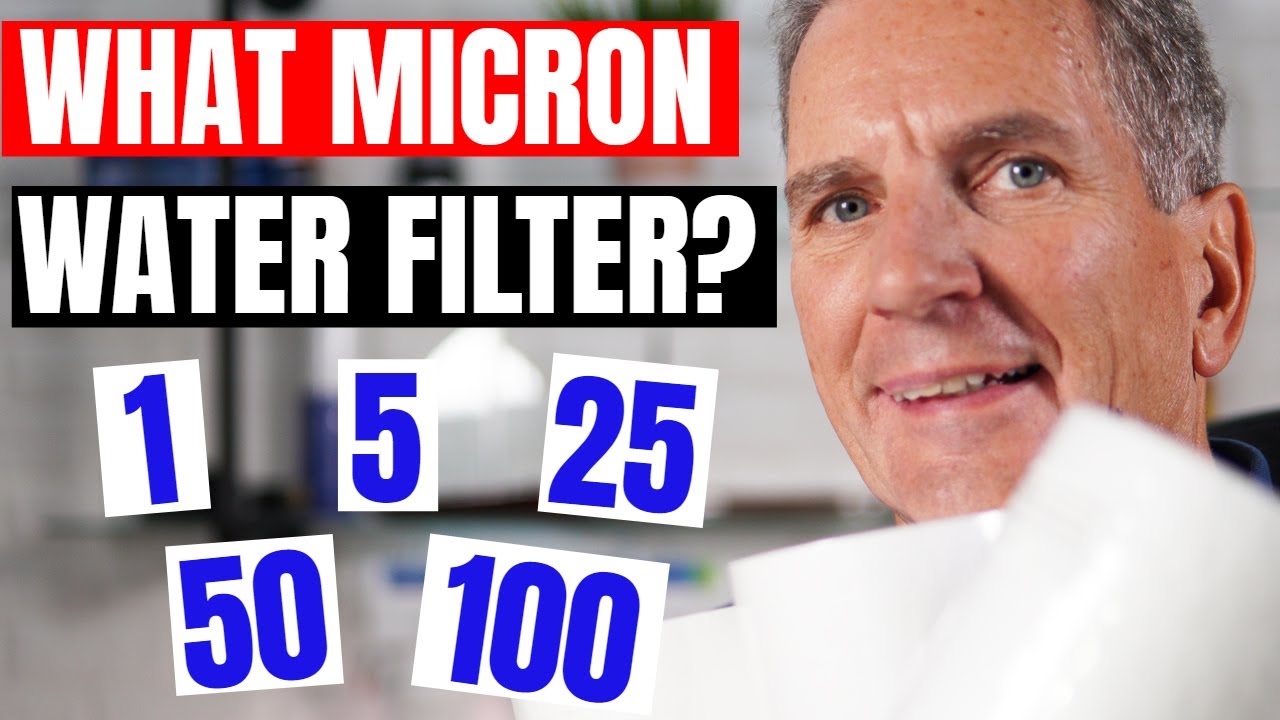
Choosing the best sediment or sand filter for your family shouldn’t be difficult, but what micron do you need? Which one is better: 50, 25, 10, 5 or 1? Is the lower number better or worse? What about an automatic self cleaning filter?
Today I’m going to explain the micron ratings to you and help you choose which sediment filter is best for your family's purposes.
TYPES OF SEDIMENT FILTERS

Filters are rated by their ability to remove sediment down to a particular size of microns. There are several different micron ratings of sediment filters to choose from and they all look the same. But, believe me, they are all quite different!
If you choose one that is too dense, you could be restricting your water flow and will require replacement often.
Choose one that isn’t dense enough and it will not remove bigger sediment and will compromise your Ultraviolet disinfection system -- so you’ll still have too much sediment getting through into your home.
So how do you know which one is best for your purposes? The way you choose your sediment filter is to look at the filter's micron rating and the application you are using it for.
BUT WAIT... WHAT IS A MICRON?
A micron is one millionth of a meter.
And what does that mean in everyday terms? Well, for example, a human hair is 45 microns in diameter; a red blood cell is 5 microns in size.

When choosing a sediment filter, you really need to know what you’re hoping to accomplish as the end goal -- what are you intending to filter out?
Check out these examples to help you decide what's best for your purposes.
- If it’s a pre filter for an Ultraviolet light it will need to filter down to a very fine 5 microns.
- If you’re just thinking about removing some of the particles in your water because they’re clogging the screens going to your washing machine or bathroom faucets, a coarser 20 microns would be fine.
-
A great solution to get the benefits of both filters is to go with a
dual gradient filter like a 50 to 5, which is a very coarse 50 microns on the outside but a much finer 5 microns on the inside.
-
Another thing to consider is alternatives to polypropylene filter cartridges. If you have a lot of very coarse sediment in your water and you’re constantly replacing filters, you can go with a
spin down filter. But keep in mind that about the finest they get is 60 microns and you need to maintain these.
-
If you have lots of sand but don’t want to keep manually cleaning the
spin down filter you can go with an
automatic backwashable filter which will remove sediment down to almost 5 microns.
- If you have multiple needs -- like coarse sand, too much sediment, and you need to pre filter for a UV light -- then you can use a couple of filters starting at the coarsest filter first, in the direction of the water flow, going down to the finest filter.
- If you have a carbon filter in the mix, it would be the last filter because carbon will clog very readily from sediment in your water -- so you definitely want to get rid of that first!
SHOP ALL FILTERS
Looking for recommendations or guidance from a pro? Our Certified Water Specialist, Gary the Water Guy, is passionate about the water treatment industry -- from water softeners, to reverse osmosis systems, to UV filters and beyond -- and is here to help you conquer crappy water!
Reach out to us here for assistance in choosing the best water treatment solutions for you and your family.
Go here for your next video on Water filtration basics and I’ll see you there!
